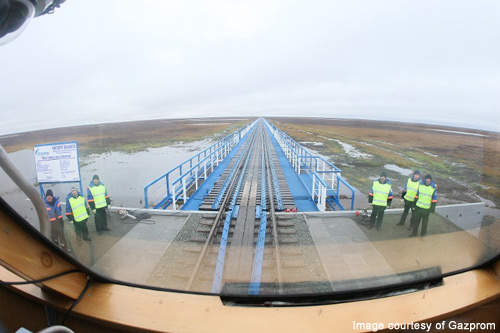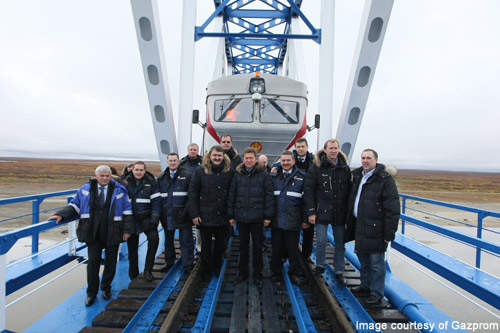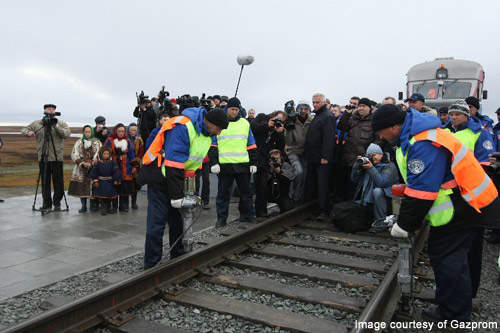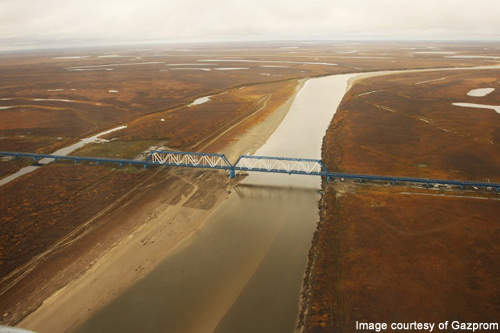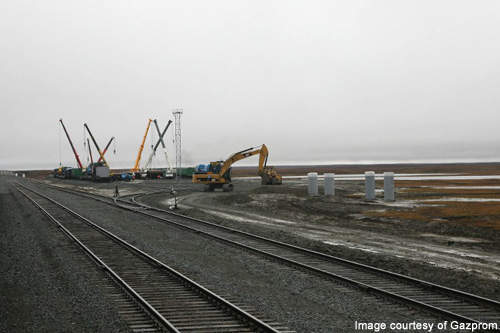The Obskaya–Bovanenkovo railroad project links Obskaya station to Bovanenkovo station in Yamal Peninsula, Russia. The project, carried out by Gazprom, involved the construction of a 525km rail line. Operations commenced in February 2010.
Yamal Peninsula is a strategic oil and gas-bearing region located in the Yamal-Nenets district of northwest Siberia, Russia, and stretches about 700km (435 miles). The peninsula is surrounded by the Kara Sea, Baydaratskaya Bay on the west and by the Gulf of Ob on the east. Bovanenkovo is a base field of the Yamal Peninsula. Transport facilities to Yamal Peninsula are quite poor but could be improved with the construction of aviation and rail structures.
The project
The Obskaya-Bovanenkovo railroad project is part of a transport system planned in the region to improve transport facilities and provide passenger access throughout the year to the Yamal Peninsula. The entire system is scheduled to be developed before 2030.
The Obskaya–Bovanenkovo railroad is one of the many transportation projects being carried out by Gazprom in the region. It will help to deliver materials and equipment for Gazprom’s Bovanenkovo field development. The railroad was extended by 47km to Karskaya station, increasing the length of the railroad to 572km. This extension was completed in February 2011.
Out of the 572km stretch of railroad, about 472km has been completed. About 360km of the railroad has already started operating. Construction of 260km of rail track from Obskaya station to the Khralov crossing point has been completed along with another 25km track section from the Khralov crossing point to the Yuribey crossing.
Infrastructure
The project included the construction of bridges, distribution lines and communication facilities. The bridges integrated in the railroad project are 12km long. Construction of 15 station sidings and 37 bridge crossings has been completed.
Construction of the 4km-long bridge crossing over the Yuribey River floodplain was completed in March 2009 and was commissioned on 24 September 2009. The construction of 88 bridges was completed along with installation of 85 spans at 34.2m each and two spans at 110m each.
The bridge crossing over the Yuribei River was constructed using cutting-edge technology and is based on the single-hinge principle. A special fastening system was implemented in the construction.
The system distributes the load along the entire bridge by evenly distributing it among all bridge pillars. Construction of the bridge crossing was started in December 2007 by Gazprom and was completed within a short period of time under harsh natural and climatic conditions.
The crossing is unique in terms of design, and the climatic and permafrost conditions of construction and operation. The bridge crossing was constructed without the deposition of soil, thereby preserving the river floodplain ecosystem. The crossing weighs 30,000t and has an operating life of 100 years. The crossing arms were secured by drilling 20–40m-deep wells. Work carried out between the 331st and 335th kilometres of the bridge, titled the floodland of the 500km-plus Yuribey River, was the most difficult part of the construction.
The 3,893m-long overpass was constructed on an elevated roadbed above the water, implementing an unorthodox engineering solution. 110 pillars with a diameter of up to 3m were sunk 30–60m into the ground.
Drilling crane units, capable of operating on permafrost in subzero temperatures, were used to install various structures and drill wells. Custom-made offroad skidders that delivered 70t girder-type bridge sections along frozen winter roads were also used in the construction of the bridge.
Specialised equipment, including custom-made pipes 2.2-3.5m in diameter used as bridge pillars, was developed and manufactured by Chelyabinsk. The tracks, thermal insulation materials and complex metal structures are Russian made.
Rolling stock
Gazpromtrans, Gazprom’s railway company, signed a memorandum of intentions with Lokomotiv-Leasing in July 2009 to buy 20 TE33A diesel locomotives for the project. Lokomotiv-Leasing is a subsidiary of AO Locomotive, which manages the national locomotive fleet of Kazakhstan Railways.
The diesel locomotives were anufactured in a new locomotive plant in Astana, Kazakhstan. A long-term contract for acquiring the locomotives was signed in mid-2010.
The future
In addition to the railroad project, construction of Bovanenkovo airport is also planned and is scheduled to begin in 2012.

